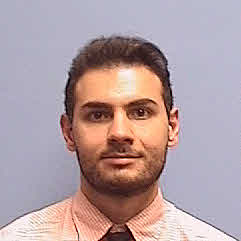Resident Supervision
The Residency Supervision Area is designed to assist hospitals and clinics with the protocols outlined for specific duties residents and fellows can perform. These guidelines are determined by the faculty of the University of Tennessee Health Science Center. Any questions about certain procedures not listed should be addressed to the faculty and not decided by the resident or fellow.
A credentialed and privileged attending physician ultimately provides supervision or oversight of each resident's patient care activities. Direct supervision by a qualified attending physician is required in the OR/Delivery Room or for non-routine invasive procedures like Cardiac Cath, Endoscopy, and Interventional Radiology. The standards for resident supervision in patient care settings are described in GME Policy #410.

Aldabek, Khaled - PGY - 3
Department of Urology
Resident Supervision
PGY 1, 2, 3, 4 or 5 Urology trainees can
perform procedures listed below with indirect supervision:
|
Urology Residency
Program |
PGY1 (URO-1) |
PGY2 (URO-2) |
PGY3 (URO-3) |
PGY4 (URO-4) |
PGY5 (URO-5) |
||
|
I.
Differential Diagnosis: |
|
|
|
|
|
||
|
A.
Clinical
History |
X |
X |
X |
X |
X |
||
|
B.
Physical
Exam |
X |
X |
X |
X |
X |
||
|
C.
Bimanual
and Speculum Pelvic Exam |
X |
X |
X |
X |
X |
||
|
D.
Interpretation
of Laboratory Studies |
X |
X |
X |
X |
X |
||
|
E.
Interpretation
of basic imaging studies (KUB, bladder ultrasound, renal and scrotal
ultrasound, cystogram, retrograde urethrogram) |
X |
X |
X |
X |
X |
||
|
F.
Write
admission orders, pre-op and post-op orders and discharge orders |
X |
X |
X |
X |
X |
||
|
G.
Coordination
of treatment with other disciplines |
X |
X |
X |
X |
X |
||
|
H.
Interpretation
of all pre-op, intra-op and post-op imaging studies (KUB, IVP, bladder
ultrasound, renal and scrotal ultrasound, cystogram, retrograde urethrogram,
CT scan, MRI including trauma situation) |
|
|
X |
X |
X |
||
|
II.
Urologic
Procedures: |
|
|
|
|
|
||
|
A,
Bladder catheterization (transurethrally and subrapubic) |
|
X |
X |
X |
X |
||
|
B. Introduction
of NG tubes |
X |
X |
X |
X |
X |
||
|
C.
Wound care (including incision and drainage of scrotal wall abscess or penile abscess and debridement) |
X |
X |
X |
X |
X |
||
|
D.
Intravenous catheterization |
X |
X |
X |
X |
X |
||
|
E.
Transrectal ultrasound guided prostate biopsies with or without anesthesia block |
|
X |
X |
X |
X |
||
|
F.
Venipuncture |
X |
X |
X |
X |
X |
||
|
G. Bedside
cystoscopy as a nonoperative procedure to assist with difficulty Foley catheter placement and/or urethral
dilation of urethral stricture disease |
|
X |
X |
X |
X |
||
|
H.
Cystoscopy
with Double J ureteral stent placement |
|
|
|
X |
X |
||
|
|
All other procedures
are performed under direct supervision of a faculty member. |
|
|||||
